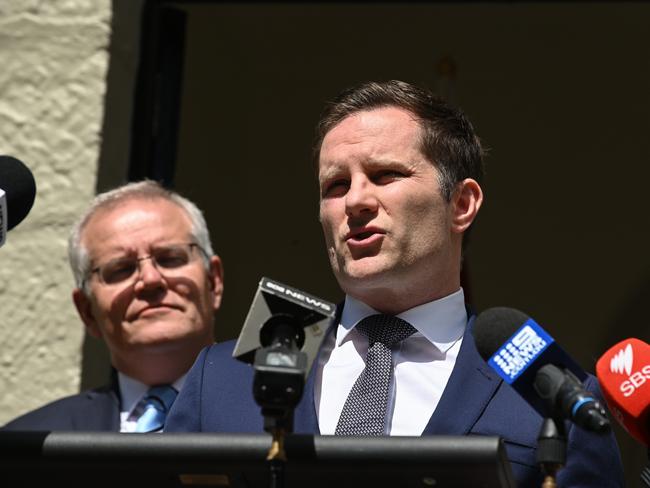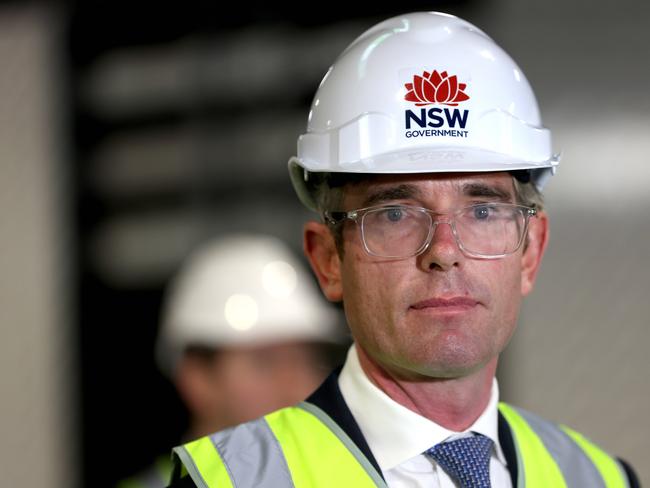Preselection fiasco: division in the ranks
A preselection calamity in NSW threatens to derail the Government at the polls, writes James O’Doherty.
Opinion
Don't miss out on the headlines from Opinion. Followed categories will be added to My News.
The federal executive had moved to intervene after months and months of delays which had failed to select candidates in key seats.
After various deals fell over, the Morrison-Perrottet-McDiven trio was put in charge of selecting nine candidates, including in must-win seats. They were announced on Saturday.
With an election to be held either on May 14 or May 21, that has robbed candidates like Maria Kovacic in Parramatta or Jerry Nockles in Eden-Monaro from crucial time they could have used for campaigning.
It is, as Premier Perrottet described it this week, a “debacle” and an “abject failure” of the NSW division not to sort its show out earlier.
So how did we get here?
The answer to that question is contested. Morrison has put it down to “factional rubbish”, after votes of the NSW state executive failed multiple times to reach the 90 per cent threshold required to endorse candidates.
Morrison is aligned to Alex Hawke, the leader of the “Centre Right” (or “Soft Right”) faction. Hawke’s factional allies accuse the Left and Right factions of putting their own self-interest ahead of the Coalition’s election changes.

But senior party figures in the federal and NSW divisions directly blame Hawke, who is Morrison’s man on the state executive.
Hawke, they argue, failed to turn up to meetings to vet potential candidates. Without him, the meetings couldn’t occur and candidates couldn’t be chosen.
Morrison was asked to send someone else but refused, party officials say.
Powerful party figures this week accused Hawke (and by extension, PM Morrison) of deliberately manipulating the state and federal party constitutions for their own ends. Essentially, exploiting the system to get their hand-picked candidates up against potential challengers.
And that, the party figures argue, should not be allowed to happen. Changes to the party’s constitution are almost a certainty after the election, win or lose.
But to truly understand the animosity between everyone involved, you need to go back more than a decade.
The Liberal Party has always been a “broad church,” as its members like to say. But in the lead up to the 2011 election in NSW, when Kristina Keneally’s Labor Party was routed and Barry O’Farrell swept to power, there was trouble brewing in the Liberal congregation.
A one-time protege of Right faction leader David Clarke, Hawke and his Centre Right grouping were increasingly breaking away.
The Centre Right tried and failed to oust Clarke from his upper house preselection. Shortly after, it is recalled, a young Dominic Perrottet was trying to get his foot in the door of Macquarie Street. He stood for preselection in Castle Hill, against a candidate backed by Hawke. Amid not-insignificant acrimony, Perrottet won that preselection.
The factional divisions in the north-west between the Right and Centre Right persist to this day.

For years, the Left — now the dominant faction — was once in a loose alignment with Hawke and the Centre Right before shifting allegiancies.
In 2018 a power-sharing agreement was brokered between the Left and the Right leaving the Centre Right on its own.
Powerbrokers from the Left and Right bloc don’t trust Hawke, who they say is more interested in factional games than his ministerial responsibilities.
The Centre-Right, for their part, believe that Left and Right faction powerbrokers are more concerned with self preservation than winning government. The faction is incensed that the dominant Left-Right bloc stopped the party from endorsing candidates in local government elections.
If you think it all sounds a little ridiculous, then you are dead right.
Division is death in politics and the deep scars in the Liberal party’s NSW branch are a major risk to the government as it prepares to go to the polls.
The High Court will on Friday consider whether to hear an appeal against a Supreme Court ruling validating candidates in 12 NSW seats, meaning the preselection woes are not over yet. If the High Court hears the appeal, it could cast serious doubt over Morrison’s election plans.
Morrison can’t win government without winning in NSW. Gains in this state were needed to offset seats the Coalition is expecting to lose elsewhere.
Whoever is to blame, the farcical display of factional rivalry from NSW Liberals has made it that much more difficult for the party to retain government, whenever Morrison calls the election.




